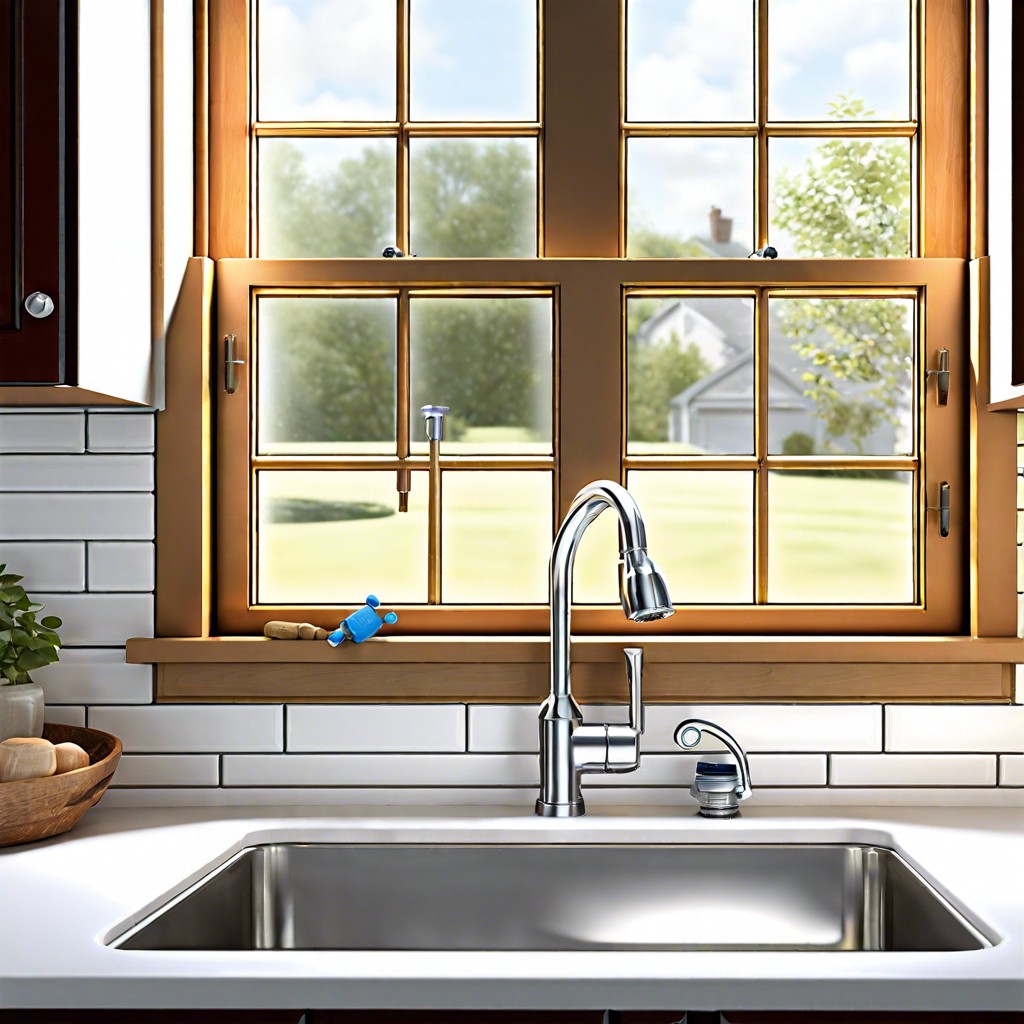Last updated on
Removing a Moen kitchen faucet is a straightforward process that typically involves shutting off the water, disconnecting supply lines, and unscrewing the mounting nuts.
Key takeaways:
- Turn off the water supply and relieve water pressure.
- Gather necessary tools: basin wrench, pliers, towels, Teflon tape.
- Disconnect water lines and remove mounting nuts.
- Detach the faucet from the sink with gentle maneuvering.
- Clean the sink surface and dispose of the old faucet responsibly.
What's Inside
Turn Off the Water Supply

Before beginning the removal process, it’s paramount to prevent any unexpected water flow. This can be done by shutting off the water valves usually located under the kitchen sink. In some cases, these valves can be a bit stiff, especially if they haven’t been turned for a while. Apply gentle pressure to twist them clockwise until they can’t turn any further, effectively stopping the water supply.
Bear in mind, there are two separate valves controlling the hot and cold water, so make sure to close both. Once the valves are off, open the faucet to relieve any remaining water pressure in the lines. This ensures a dry work area when you disconnect the water lines later on. If your sink doesn’t have individual shut-off valves, you’ll need to turn off the main water supply for your home.
Remember, keeping a towel handy is wise to catch any residual water that might dribble out while you’re working. This minor step is crucial—it’s the foundation for a smooth, mess-free removal of your kitchen faucet.
Gather Necessary Tools
Before diving into the task, having the right tools at your disposal is key to a smooth removal process. A basin wrench is essential; its long handle and swiveling jaw can reach the tight spaces under the sink to loosen the nuts and bolts. Channel-lock pliers or a wrench set can also be helpful for disconnecting the water supply lines.
In addition to the wrenches, have some towels and a small bucket or bowl on hand. These will assist in catching any water left in the lines when they’re disconnected. Teflon tape is also good to have in case you need to secure the threads when you’re ready to install a new faucet.
A flashlight or a work light provides visibility in the shadowy confines beneath the sink. Lastly, a screwdriver may be necessary, as some Moen faucets use screws for stabilization.
By assembling these items before starting, you’ll prevent unnecessary interruptions and ensure a swift and successful removal. Remember, staying organized makes the process simpler and safer.
Disconnect the Water Lines and Remove the Mounting Nuts
Having turned off the water supply and prepped your workspace, you’re now ready to dive into disconnection and removal. First, slide under the sink and position yourself to access the water lines. A basin wrench or a pair of adjustable pliers comes in handy here. Use these tools to gently twist and disconnect the supply lines from the valves. Keep a small bucket close by to catch any water that might escape.
Next, your attention shifts to the mounting nuts securing the faucet to the sink. These nuts could be plastic or metal and might require some elbow grease to loosen, especially if they’ve been in place for a while. A basin wrench is again crucial because of its long handle that allows you to reach up behind the sink basin where space is limited. Rotate the mounting nuts counterclockwise to unscrew them. If they’re stubborn, penetrating oil can be applied for easier removal.
Once the nuts are off, you may need to wiggle the faucet a bit to break the seal and lift it from the mounting holes. During these steps, maintaining a steady hand and patience is vital to prevent damage to your sink or plumbing.
Detach the Faucet From the Sink
Once the water lines and mounting nuts are unfastened, you’re ready for the next step: getting the faucet off the sink. This might involve a bit of wiggling and gentle maneuvering, as the faucet may have seals or plumber’s putty that kept it snug against the sink’s surface. Gently push upwards from beneath the sink to loosen the fixture. If it resists, a plastic putty knife can help you pry it off without scratching the sink.
Remember, faucets are sometimes installed with a gasket that fits between the sink and the faucet. If present, this will need to be removed along with the faucet itself. Keep your grip firm but careful—dropping the faucet could damage your sink or cause a clatter that echoes through the kitchen.
If corrosion is holding the faucet in place, penetrating oil might be necessary. Apply it around the base where the faucet meets the sink, wait a few minutes, and then try removing the fixture again. Patience is key here. Once the faucet is loose, lift it out through the top of the sink and lay it aside, avoiding any drips on the surface below.
Clean the Sink Surface and Dispose of the Old Faucet Responsibly
Once you’ve successfully detached the faucet, you’ll notice residue or water stains on your sink’s surface. It’s essential to tackle this immediately to ensure a pristine workspace for your new faucet. A putty knife can be quite effective for scraping off old plumber’s putty or any remnants. For water deposits, white vinegar works wonders – apply it generously, let it soak for a few minutes, and then wipe clean. Don’t forget the corners and edges where grime loves to hide.
Now, it’s time to address your old faucet. Simply throwing it in the trash isn’t the most eco-friendly choice. Metals from faucets can be recycled, so consider taking it to a local scrap metal facility. Another option is to donate it if it’s in working condition. Organizations like Habitat for Humanity accept used home improvement items. By disposing of your faucet responsibly, you’re taking a step towards sustainability and helping your community.





